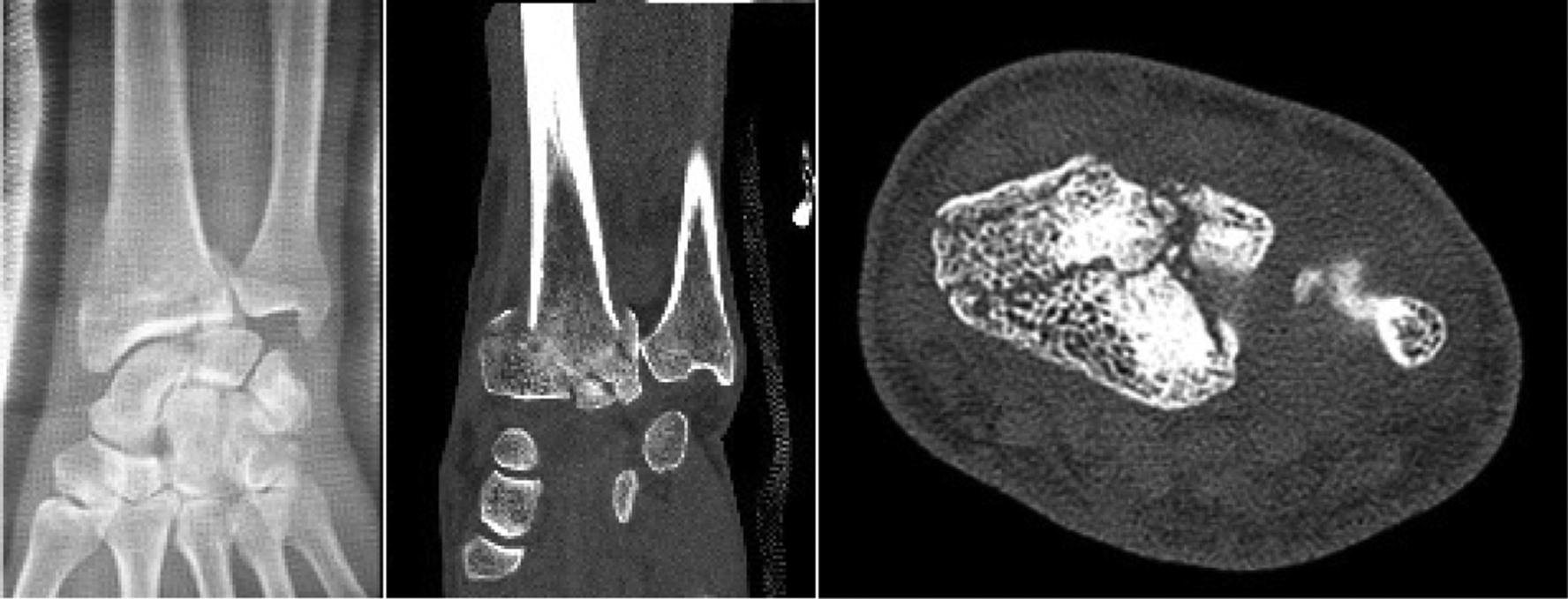Physical Address
304 North Cardinal St.
Dorchester Center, MA 02124
Arthroscopic assistance allows direct visualization and correction of the reduction of intraarticular distal articular radius fractures
A high percentage of concomitant scapholunate interosseous ligament (SLIL) and triangular fibrocartilage complex (TFCC) lesions are diagnosed with this technique
Arthroscopy allows same-stage treatment of SLIL and TFCC injuries after fracture fixation, although its clinical relevance remains debated due to the favorable natural course of the vast majority of these lesions.
A 25-year-old, right-handed man fell on his outstretched right hand during professional basketball. He presented to the emergency department with a comminuted intraarticular distal radius fracture ( Fig. 1 ). What is the most effective approach for management of this fracture and likely associated ligament injuries?

Arthroscopic-assisted treatment of distal radius fractures allows for potentially improved reduction through direct visualization. Moreover, it provides an accurate diagnosis of associated ligamentous injuries including SLIL or TFCC lesions that can otherwise be underdiagnosed. These injuries could be diagnosed at a state of advanced degenerative changes (such as SLAC wrist) that could lead to palliative surgery. For the TFCC, persistent ulnar-sided wrist pain could occur, as well as distal radio-ulnar joint (DRUJ) instability. Beyond 30 degrees of displacement of the radial epiphysis in the sagittal plane, associated TFCC injuries are very frequent and could be underdiagnosed without arthroscopy evaluation. The functional cost of these lesions makes early management important, especially in young adults.
Can arthroscopic assistance improve the reduction of intraarticular distal radius fractures?
How does arthroscopy contribute to the diagnosis and treatment of concomitant ligament injuries?
Does arthroscopic assistance help to improve long-term functional outcome?
Arthroscopic assistance in the management of intraarticular distal radius fracture (IADRF) allows a better reduction of articular surface and could prevent degenerative arthritis of the wrist. It is also the only tool that allows control of intraoperative reduction of “Die punch” type impaction fractures and check for the absence of intraarticular protruding screws when aiming for the stable subchondral fixation. Furthermore, it allows to assess and manage associated ligament injuries at the same time. Nevertheless, enthusiasm is tempered by inconsistent evidence of its benefits and relevance in routine management of IADRF.
Become a Clinical Tree membership for Full access and enjoy Unlimited articles
If you are a member. Log in here